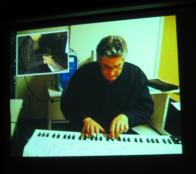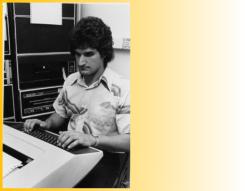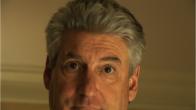|
§ Chapter II. John
Celona a.k.a. Midnite Johnny was born in San Francisco when The Birdman was
doing his time over on Alcatraz Island and the memory of the sewer rats that
carried the bubonic plague was folkloric. "It was a tough town," he says.
"Despite all the art, and there was plenty of that with the beats and outlaw
academics. As a teenager I went to school with Herb Mullin, who became the
Santa Cruz Strangler... evenings I was catching the jazz greats like Trane. San
Francisco had that kind of dichotomy for me."
JC got into music early: piano
lessons at 11 with Mrs. Windsor who lived down the street with her 18 lb cat
'Duke'. Fur Elise, Tennessee Waltz... that sort of repertoire. But he began
rewriting these pieces and others as he studied harmony, got his hammers in a
row. Meanwhile Bobby Darin, Elvis, James Brown, Connie Francis and all the
usual suspects were on his transistor radio. At 13 he switched to clarinet and
tenor saxophone, first finding Dixieland, loving its freedom and emotion...
then quickly discovering west coast jazz and John Coltrane, Harold Land, the
Gerald Wilson Big Band. "Wore that record out 'Viva Tirada'," he says. "But
Trane was more or less my idol and I sounded a lot like him. I would use his
'Giantsteps' solo as my warm-up exercise. Problem was, after he kicked the
junk, he got too spiritual for my likes, seeing that I was a disconnected
catholic."
By 15 he had become "Midnite
Johnny", was playing the bars and letting his hair grow long. It was the dawn
of the New Age and San Francisco was a locus of the counter-culture... even if
the trains were moving their flatbeds of howitzers and tanks into Oakland for
shipment to Viet Nam.
So he was out there, on the street,
on the stage, gigging with R&B and Latin groups like Tower of Power,
Santana, and Coltrane's bassist Raphael Garrett. Played with Sun Ra at SF
State, doesn't recall getting paid for the gig. But he made some spondulix
arranging radio & TV commercials (Yellow Pages, Jensen swimwear, Kansas
City suburban development). He also scored student films at SF State including
a famous short at the time, 'Frizzy Mary'.
But then something else was
happening, that rejection of technological totalitarianism (war, consumerism)
by the youth culture with its contradictory embrace of designer drugs and
electric music... and mystical solutions. Theodore Roszak wrote about it in his
book "The Making of the Counter-Culture" and Hunter S. Thompson not only wrote
about it but lived it. Minimalist composers like Terry Riley with his tantric
loops & electro polyrhythms ["Rainbow In Curved Air"] and Morton Subotnik
with his molecular fantasies ["Silver Apples of the Moon"] showed the way.
Thus JC was drawn to composition
and the Buchla
synthesizer. "SF State had the first marketed Buchla 100 series in 1966,"
says JC. "Two types of patch cords: one for audio, the other for control
voltages. No piano-type keyboard, that came a little later with the Moog. Don
Buchla's keyboard was a controller, you being able to assign modules,
parameters, touch-sensitivity and Outer Space. So that was it for me -- adios
the tenor."
But beneath the new jacket &
the academic fellowships, he was still Midnite J., agent of the
Krell. |
blowin' in the
jungle
"There was music all
over that park, from the big pig roast in the open pits, medieval druids of the
be-ins with Big Brother and Captain Beefheart, to the wino drumming near Kesar
Stadium but the real dope went down out west, around the Chain of Lakes,
overgrown, hilly, isolated, where a man could blow modal tenor lines, the cry
of the planet brother, and sheets of multiphonics, a call-and-responsorial with
unseen but heard conga natives across the lake, hidden in the jungle. The
flamingos dug it too."
Santana & the
M.I.Bs
"Carlos S. always
made that face, you know the one, the soulful grimace, reaching for the
passion, the promise of fulfillment, the big wide load coming down the road,
that euphoria, looking towards Trane. Him and his drummer used to sit in with
us, the drummer wanting some fine loving from our lead singer Wendy, in his Jag
parked out back. Her father, a United Airlines pilot, had 8mm footage of a UFO
he filmed but that was confiscated by, yes, two guys who came to his door in
black suits. We never saw that but we did see flashing red lights of the
coppers behind us as we swizzled Olde English 800 in Ross' cherry red Chevelle
on our way to rehearsal at her upscale house in Woodside."
Sun
Ra
"I played a gig with
Sun Ra in San Francisco around 1967-68. The auditorium was full of pot smoke
and the groove was on. The music was fierce, fun and free... one of the
memorable moments was the sax section (Marshall Allen etc.) chasing me
throughout the room when I began raining sheets of multiphonics from my tenor
against them in defense. It was thrilling and electrifying. "
|



